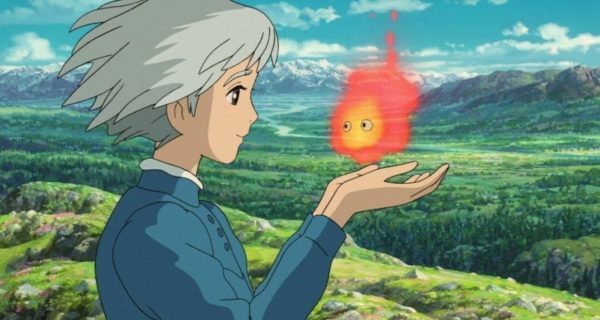I’m just going to come out and say it… I think that, on the whole, Ghibli Studios has a better understanding of true love than classic Disney. Most of the classic Disney movies have this idea that true love is when you find Mr. or Mrs. Right – often falling in love instantly – and living happily ever after. Cinderella, Snow White, Sleeping Beauty, Beauty and the Beast, Enchanted, and who knows how many other classic Disney movies fit this mold.
Now I know what some of you are thinking: What do you think true love is if not romantic love that lasts forever? Well, I believe true love is consistently putting another person before yourself, accepting their weaknesses and strengths, and holding them up to a high-but-realistic standard – as Christ did. Over and over again we see him putting people before himself, as he taught and healed when tired and hungry. Over and over again he accepted people as they were. He forgave their sins and encouraged them to overcome their failures, to be better, to become more. “Go and sin no more.” High expectations, indeed. And of course, he died for the sins of all mankind; that we may have the chance to be with him in eternity. If you confine true love to romantic love, Christ – the epitome of love Himself – is discounted.
On the other hand, Studio Ghibli (whose distribution rights have been owned by Disney since 1996), portrays true love as selfless love between any two characters. This is pointed out directly in Ponyo and in Howl’s Moving Castle, but it is also alluded to in many other Ghibli films – where siblings or friends often go to great lengths to help each other, sacrificing their wants, needs, and safety for each other.
This is not to say that no Disney movies have these characteristics. Many classic Disney movies depict family and friends helping each other. Some, like Beauty and the Beast, have characters holding each other up to a higher standard. Some even show characters sacrificing themselves for others – such as Mulan and Belle sacrificing themselves for their fathers, or King Triton sacrificing himself for Ariel. But these movies still don’t call this true love, portraying that as strictly romantic.
The exceptions that I have seen to this tendency are Frozen and Brave, both of which did an excellent job of portraying familial love as true love. These movies meet the same standard as the Ghibli movies in this respect. Let me say again that many classic Disney movies contain scenes of true love between various characters, but the movies don’t imply that this love is also ‘true’ in the way Ghibli Studios, Frozen, and Brave do.
I haven’t seen every Disney movie, and there may be more examples from classic Disney, but I’m hoping these two Disney princess movies are the beginnings of a shift away from the idea that love must be romantic in order to be true. I’m not going to hold my breath, though.
For more fantastic articles from our latest magazine issue ‘Disney’, please click on the below link:
F&F Winter 2019: Disney
Image Credit – Original photo by Veronica Lynn
